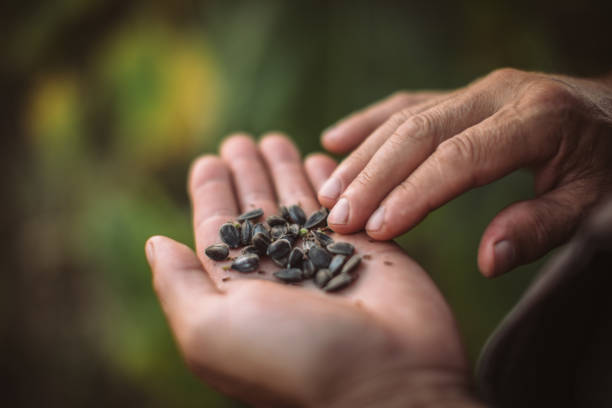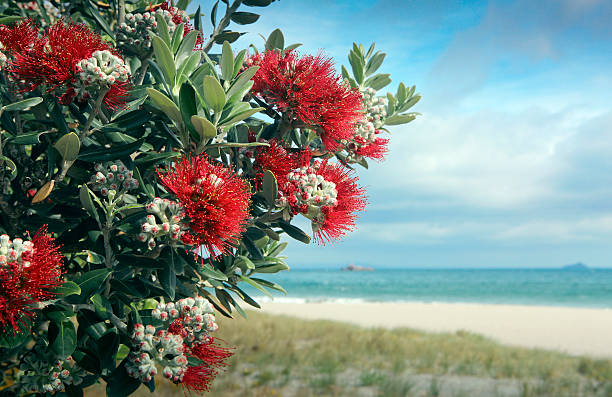New Zealand’s natural landscape is a vibrant tapestry woven with diverse flora that paints its countryside in vivid colors and fascinating textures. Among these natural treasures, native NZ flowers stand out for their unique beauty and ecological significance. This article delves deep into the world of native NZ flowers, exploring their varieties, ecological roles, and the efforts to conserve these botanical wonders.
The Spectrum of Native NZ Flowers
New Zealand’s geographic isolation has cultivated a botanical paradise, where approximately 80% of the flora is native. These plants have not only adapted to local conditions but have also become integral to the cultural fabric of the nation.
| Plant Name | Characteristics | Description | Additional Information |
| Kōwhai (Sophora Microphylla) | Bright yellow blooms in spring | Crucial for nectar-feeding birds like the Tui and Bellbird | The Kōwhai is not only a source of food for birds but also a popular choice in native gardens, reflecting New Zealand’s rich botanical heritage. |
| Pōhutukawa (Metrosideros excelsa) | Fiery red blooms in December | Known as the “Christmas tree” of New Zealand; Attracts native birds and insects | Pōhutukawa is deeply embedded in local culture and often features in art and folklore. It thrives in coastal areas, adding vibrant color to the landscape. |
| Harakeke (Phormium tenax) | Valued for fibrous leaves | Tall flowering stalks; Nectar-rich blooms attract native wildlife | Harakeke is not only significant ecologically but also culturally, as Maori use its fibers (muka) for traditional weaving. |
| Rata (Metrosideros robusta) | Vine and tree varieties | Vibrant blooms; Important food source for native wildlife during flowering season | Rata trees can grow to impressive sizes and are particularly noted for their role in forest regeneration and ecological balance. |
Ecological Importance
The role of native NZ flowers extends beyond their visual appeal. They are a cornerstone of the local ecosystems.
Pollination
Native New Zealand flowers exhibit unique adaptations for pollination, significantly enhancing their interaction with local wildlife. These adaptations are crucial for the sustainability of both plant and animal populations within their ecosystems, fostering a balanced and productive environment.
- Kōwhai (Sophora microphylla): Tubular yellow flowers align perfectly with the beaks of nectar-feeding birds like the Tui and Bellbird, ensuring effective pollen transfer. This specific design not only facilitates pollination but also supports the survival of these bird species by providing them with a vital food source.
- Flax (Phormium tenax): Produces nectar-rich flowers that attract a variety of pollinators, including insects and birds, facilitating cross-pollination. The nectar from flax is highly valued by local bee populations, which play a pivotal role in the pollination of other native and agricultural plants.
- Rata (Metrosideros species): The vibrant red flowers are not only visually striking but are designed to attract specific bird species for pollination. The structure of the flower supports the weight of these birds, ensuring they can feed on the nectar while effectively dispersing the plant’s pollen.
Habitat Provision
The structural diversity and dense foliage of native NZ flowers provide critical habitats for a variety of animal species. These plants offer both food resources and shelter, playing a significant role in sustaining local biodiversity and offering essential ecological services.
- Pōhutukawa (Metrosideros excelsa): Known as the New Zealand Christmas tree, its robust branches are favored nesting sites for coastal birds, providing safety from predators. The dense foliage also offers protection during harsh weather, making it an invaluable shelter.
- Manuka (Leptospermum scoparium): Supports a diverse range of insects and small mammals, thanks to its dense bushy structure. The Manuka also plays a crucial role in local ecosystems as a pioneer plant, helping to regenerate cleared lands.
- Kanuka (Kunzea robusta): Similar to Manuka but with slightly different floral characteristics, supporting various insect species, which in turn attract bird populations. Kanuka forests are important ecological sites, providing habitat for numerous native species and contributing to the overall health of forest ecosystems.
Soil Integrity and Conservation
Native NZ flowers contribute significantly to soil conservation and integrity through their well-adapted root systems and life cycles. These plants help stabilize the soil and enrich it with necessary nutrients, mitigating erosion and degradation, which are crucial for maintaining the health and productivity of landscapes.
- Harakeke (Phormium tenax): Its deep, fibrous roots bind the soil effectively, preventing erosion, while its decaying leaves enrich the soil with organic matter. Harakeke is particularly effective in wetlands where soil integrity is vital for water filtration and flood mitigation.
- Totara (Podocarpus totara): Known for its deep root systems that anchor the soil and its broad leaves that contribute to the leaf litter, improving soil quality. Totara trees are often found in native forests where they play a critical role in maintaining forest soil health and structure.
- Kauri (Agathis australis): Although primarily known for its timber, the Kauri’s extensive root system plays a crucial role in soil stabilization and water regulation. The massive size of Kauri trees influences the surrounding soil ecology, promoting a unique biodiversity that can thrive only in such environments.
Conservation Efforts

Conservation of native NZ flowers involves both protecting natural habitats and cultivating plants in domestic and botanical gardens.
Legal Protection
Conservation efforts in New Zealand heavily rely on legal protections that safeguard wilderness areas from destructive activities such as development and logging. These legal measures ensure the preservation of native flora by maintaining their natural habitats.
- Legal frameworks: Acts like the Conservation Act 1987 and the National Parks Act 1980 provide statutory protection to native plants. These laws establish reserves and national parks where flora and fauna are preserved.
- Restrictions: Prohibitions on deforestation and habitat destruction help maintain biodiversity. Activities like logging and land clearance in protected areas require permits and environmental impact assessments to mitigate their effects on native plant species.
Propagation Programs
Botanical gardens and local communities actively engage in propagation programs to cultivate native plants, ensuring their survival and genetic diversity outside natural habitats.
- Seed banks: Botanical gardens and conservation organizations maintain seed banks that store seeds from a wide range of native plant species. These seeds are preserved under controlled conditions to ensure their viability for future propagation efforts.
- Cuttings and grafting: Techniques such as vegetative propagation through cuttings and grafting are used to propagate rare and endangered species. By replicating plants through these methods, conservationists can increase the population of threatened species and reintroduce them into the wild.
Education and Awareness
Educational campaigns are crucial in raising public awareness about the importance of native flora and the threats they face.
- School programs: Many schools integrate lessons on native plants into their curricula, educating students about the ecological significance of these species and the importance of conservation efforts. Field trips to botanical gardens and nature reserves further enhance learning experiences.
- Community outreach: Non-profit organizations and conservation groups conduct workshops, seminars, and public events to engage local communities in conservation initiatives. These activities promote sustainable practices and empower individuals to take active roles in protecting native flora.
Conclusion
Native NZ flowers are not just an integral part of New Zealand’s ecological framework but also a source of national pride. The conservation of these plants is critical, not only for maintaining biodiversity but also for preserving the natural heritage of the country. By understanding and appreciating these native blooms, we can all contribute to their preservation and enjoy their beauty for generations to come.
FAQ
A: Habitat loss, invasive species, and climate change are significant threats. Urban expansion and agricultural development often lead to habitat destruction.
A: Absolutely! Many native plants adapt well to gardens. They can provide natural beauty and attract wildlife such as birds and bees to your garden.
A: National parks and local nature reserves are great places to see native NZ flowers. Specific locations like the Wellington Botanic Garden also offer extensive collections.
A: Joining local conservation groups, participating in community planting days, and spreading awareness are excellent ways to contribute.
A: Spring and early summer are typically the best times to see these plants in bloom, although this can vary from one species to another.
